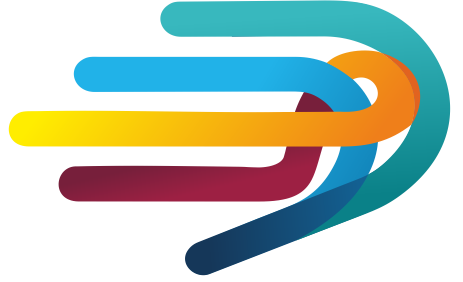Bibliography:
Lesson 1 - Welcoming Committee
- Notícias Magazine. (2020, March 25). Portugal: Schools with children from all over the world. European Commission. Retrieved February 28, 2022, from https://ec.europa.eu/migrant-integration/news/portugal-schools-children-all-over-world_en
- U.S. Department of Education, Office of English Language Acquisition. (2016). Newcomer Tool Kit. U.S. Department of Education. https://www2.ed.gov/about/offices/list/oela/newcomers-toolkit/ncomertoolkit.pdf
- Guo-Brennan, L. & Guo-Brennan, M. (2019). Building welcoming and inclusive schools forimmigrant and refugee students: Framework and promising praxis. In K. Arar, J.S. Brooks & I,Bogotch, (Eds.), Education, Immigration and Migration: Policy, Leadership and Praxis for a ChangingWorld, (pp. 73-93). Bingley, UK: Emerald Publishing https://www.academia.edu/40123982/Building_Welcoming_and_Inclusive_Schools_for_Immigrant_and_Refugee_Students_Policy_Framework_and_Promising_Praxis
Lesson 2 - Story circles
- Building Resilience through the Development of Intercultural. (2021, May 28). UNESCO. https://en.unesco.org/themes/intercultural-dialogue/competencies
- UNESCO. (2021, May 7). Developing Intercultural Competencies through Story Circles [Video]. YouTube. https://www.youtube.com/watch?v=QUQcA-FKWqg
- Deardorff, D. K. (2020). The UNESCO Manual for Developing Intercultural Competencies: Story Circles. UNESCO Publishing. https://unesdoc.unesco.org/ark:/48223/pf0000370336
Lesson 3 - KWL Charts
- How to do a KWL - TeachLikeThis. (2014, January 18). [Video]. YouTube. https://www.youtube.com/watch?v=y0GrzhAqT7g
- PAESIC project’s partners. (n.d.). PAESIC – PAESIC Erasmus+ Project. PAESIC Erasmus+ Project. Retrieved February 28, 2022, from https://www.paesic.eu/
Lesson 4 - identity texts
- Goethe institut . (n.d.). Multilingual school projects. Classes bilangues - Multilingual school projects - Goethe-Institut . Retrieved February 25, 2022, from https://www.goethe.de/ins/fr/lp/prj/clb/enindex.htm
- Goethe Institute. (n.d.). Classes bilangues - Theatre - Sessions - Goethe-Institut. https://www.goethe.de/. Retrieved February 25, 2022, from https://www.goethe.de/ins/fr/lp/prj/clb/unt/the/ein/enindex.htm
Lesson 5 - Language Biographies Methodology
- Eschenauer, L. Faire corps avec ses langues. Theatre and didactics: towards a definition of translangageance. E-CRINI - The electronic journal of the Centre for Research on National Identities and Interculturality, Editions du CRINI, 2014, Proceedings of the conference Languages in Motion, Languages in Motion, 6, pp.1-24. https://hal.archives-ouvertes.fr/hal-01818564/document (in French)
- Atelier de recherche Compétences (inter) culturelles à l’Ecole, INSPE de CAEN. (2019, October 19). Ma biographie langagière et mon portrait langagier | @ltérité. @ltérité. Retrieved February 28, 2022, from https://lewebpedagogique.com/alterite/2019/10/19/ma-biographie-langagiere-et-mon-portrait-langagier/
- Lycée Français de Tananarive. (2021, June 8). Le Mai des Langues 2021 | Biographie langagière des CM2b de l’EPFD [Video]. YouTube. https://www.youtube.com/watch?v=-gDC_PlJc5o
Lesson 6 - Artistic practices in language learning
- Cummins J, Early M, Identity Texts: The Collaborative Creation of Power in Multilingual Schools, Trentham Books, 2011 https://fr1lib.org/book/2363218/1cd813
- Exemples from: EN101 Author, Self-portraits Ideas for ESL Students, 2019, https://englishteaching101.com/
- Stefanie Giebert, 'Drama and theatre in teaching foreign languages for professional purposes', Research and pedagogical practices in specialised languages [Online], Vol. 33 No. 1 | 2014, online 10 March 2014, accessed 28 February 2022. URL: http://journals.openedition.org/apliut/4215 ; DOI: https://doi.org/10.4000/apliut.4215
- Aflatoun Active Learning Methods: Image Theatre. (2015, December 11). [Video]. YouTube. https://www.youtube.com/watch?v=j0qWF3hiZNc
- frichardson@nbss.ie (Ed.). (2019, June). KWL Charts: Reading and Learning Strategy Before, During and After Reading Strategy. National Behaviour Support Service (NBSS). https://www.nbss.ie/sites/default/files/publications/kwl_comprehension_strategy_handout__copy_2_0.pdf
- Read Write Think. (2013). K-W-L Chart | Read Write Think. ReadWriteThink.Org. Retrieved February 28, 2022, from https://www.readwritethink.org/classroom-resources/printouts/chart-0
- Facing History & Ourselves. (2017). K-W-L Charts. Facing History and Ourselves. Retrieved February 28, 2022, from https://www.facinghistory.org/resource-library/teaching-strategies/k-w-l-charts

Login
Accessing this module requires a login. Please enter your credentials below!


